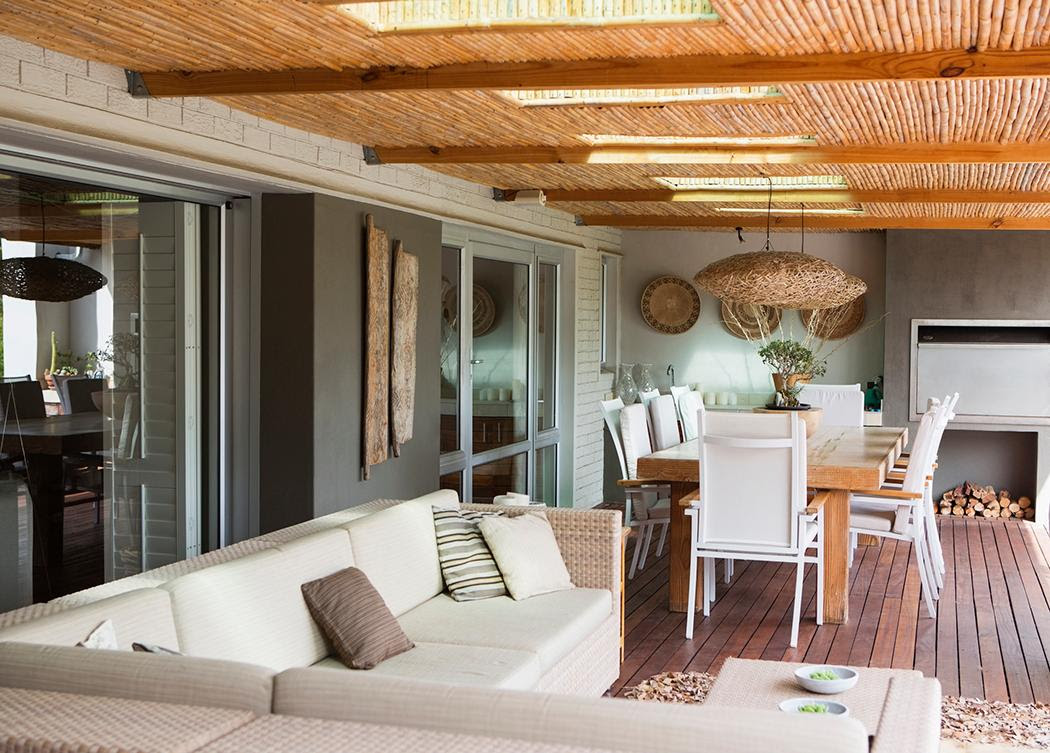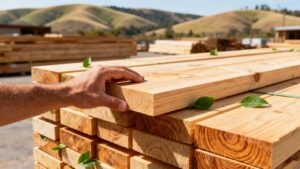Are you pondering the idea of constructing a deck?
If you’re planning to build a deck on your own, here are some helpful tips to achieve a professional finish These simple tips can be beneficial for homeowners who often embark on such projects.
Outdoor spaces like decks are unique and distinct from regular rooms. They act as an intermediate space between your home and nature. The atmosphere is refreshing, and you can experience the warmth of the sun, as well as the fragrance of your garden. Outdoor spaces are naturally air-conditioned with gentle breezes, providing the perfect opportunity to witness the shadows lengthen and the stars emerge on a summer night.
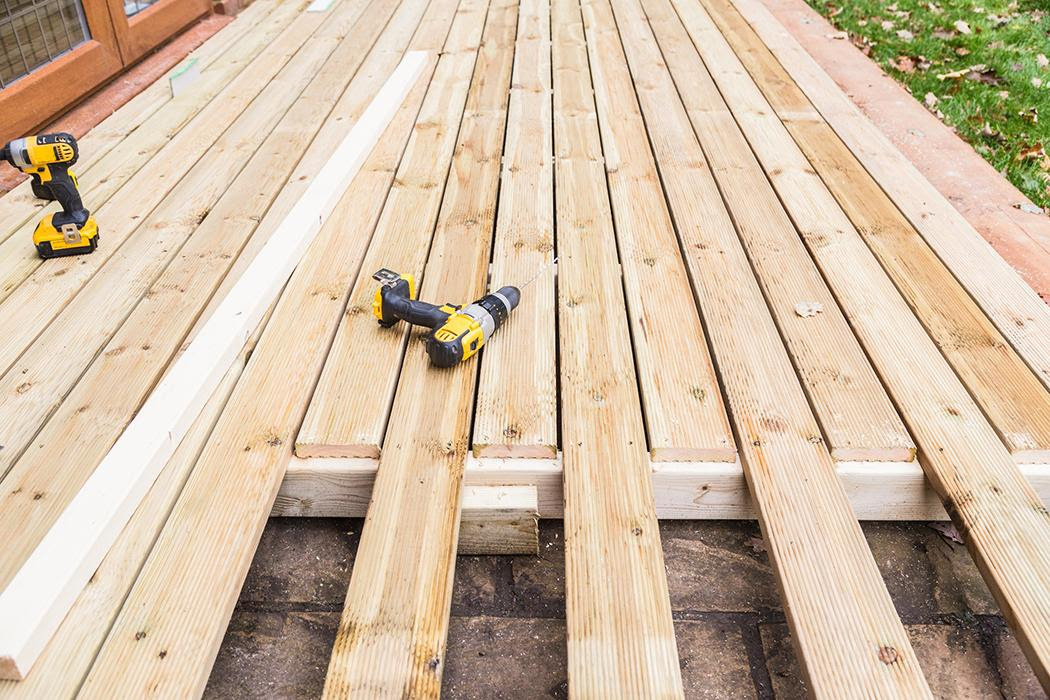
Decks offer several benefits over bare ground or lawn, including a level surface, stability, support for furniture, protection from rain, and usable living space.
Additionally, decks can serve multiple purposes such as living rooms, breakfast nooks, workout areas, sunbathing spots, gathering spaces for friends and family, or even for some quiet time with a good book. However, constructing a deck requires knowledge and expertise in construction principles.
Deck footings are an essential aspect of constructing a deck. An on-grade deck, which is the simplest type of deck, typically requires concrete piers to which beams and joists are attached. The rim joists, which are the perimeter joists, are doubled and then covered with trim boards.
Depending on the climate, piers may need to be set on footings that extend several feet below grade. It is vital to check with your local building department to determine the code requirements in your area.
Proper footings prevent the deck from “heaving” in case the ground freezes. Framing hardware, such as post bases and joist hangers, are used to join all framing members. Decking, which is the surface you walk on, is fastened to the joists with screws or nails from the top or “invisible” fasteners from below.
An on-grade deck is usually less than a foot off the ground and, therefore, does not require railings or stairs, which can complicate construction significantly. However, if a door leads to the house and it is a step above the decking, it is easier to construct. If you have to build two or three steps to reach the door, you will also need a landing to make entering and exiting the house safer and easier.
The higher a deck is above the ground, the more complex it is to design and build.
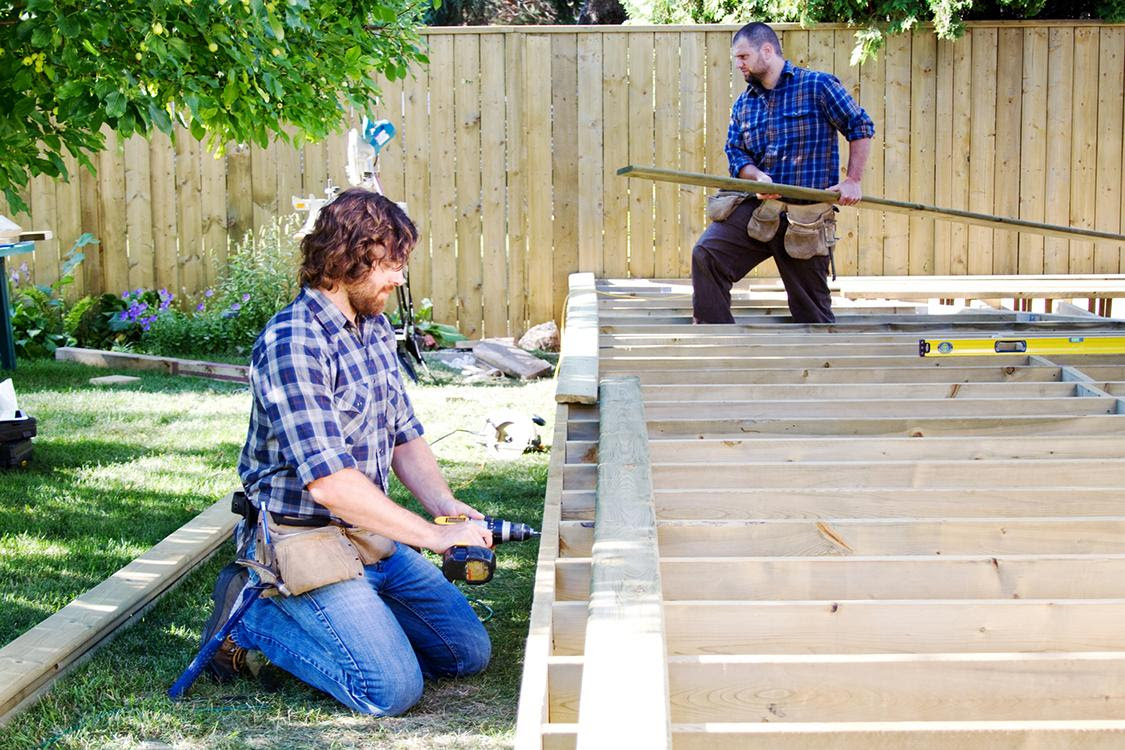
Deck framing is a crucial component when building a deck, which can vary from simple platforms to multi-level structures with a range of shapes and amenities. Openings in the deck surface can provide space for plantings and integrate outdoor furniture elements. Decking can be parallel or diagonal, depending on the preferred design.
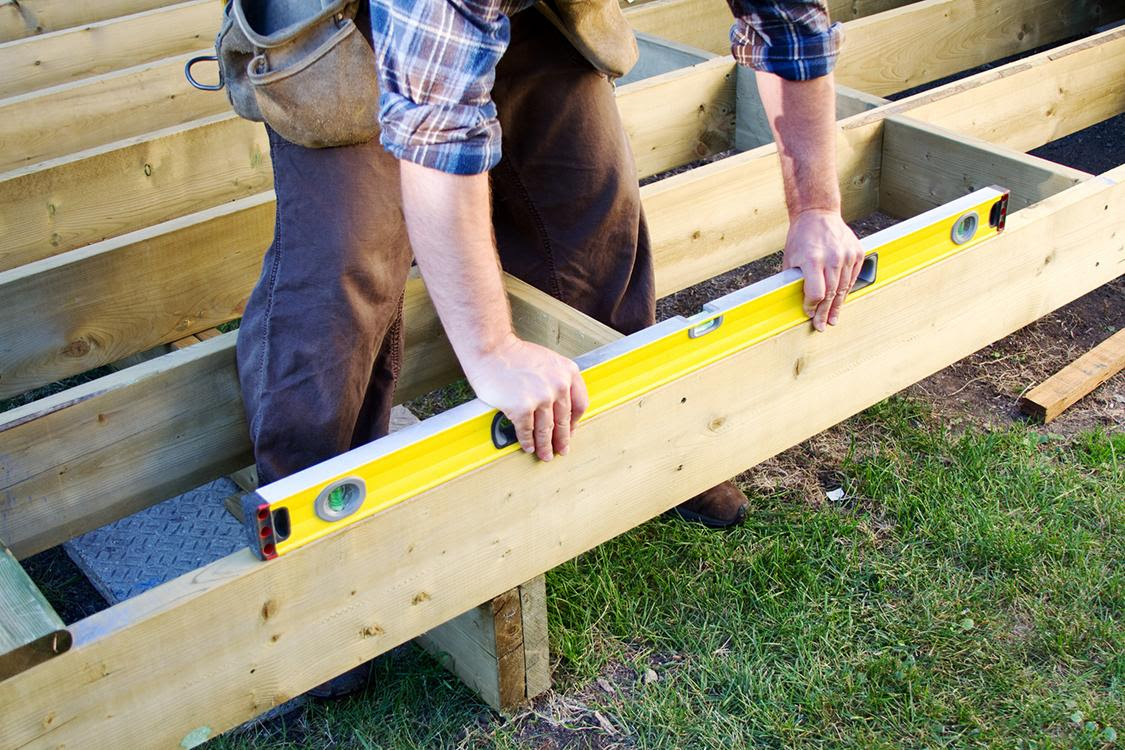
It is essential to ensure that the tops of footings extend 6 inches above ground and are pitched outward to prevent water collection and decay or insects infestation. One of the best woods for decking is redwood. We carry redwood from Atlantic Forest, which is prefect for creating your ideal deck.
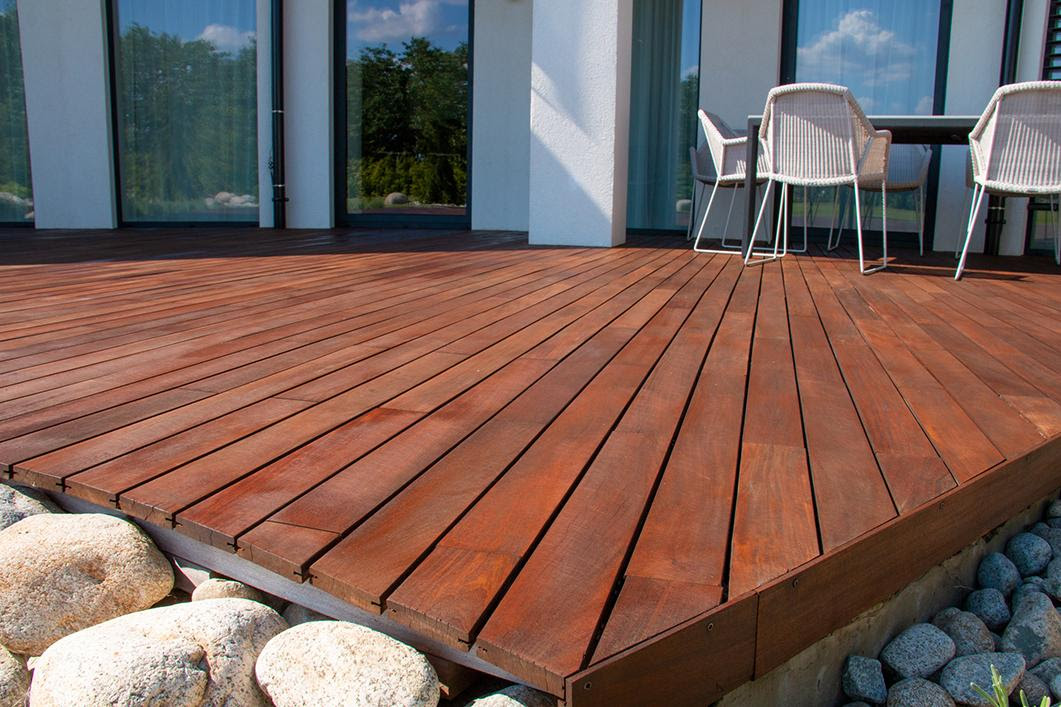
When building a deck, it is essential to install a ledger board if the deck is adjacent to the house. The siding is typically removed, and the ledger board is bolted to the house framing. To prevent rain from entering the joint between the ledger and the house, flashing should be installed. In contrast, if the deck is a freestanding “island” deck, a ledger board is not required.
Attach joist hangers to the side rails, spacing them 16 inches apart on center. Lay out all floor joists and side rails before nailing them all at once using galvanized nails. The first floorboard should overhang by half an inch. For enclosed decks or screen porches, tongue-and-groove flooring can be used. It’s advisable to use pressure-treated lumber for the deck frame.
Constructing a deck can significantly enhance the enjoyment of your yard. However, it is crucial to spend ample time planning every step. Building a deck is beneficial as it enables you to acquire skills that can be useful in constructing other DIY projects such as garden sheds, porches, arbors, fire pits and more.
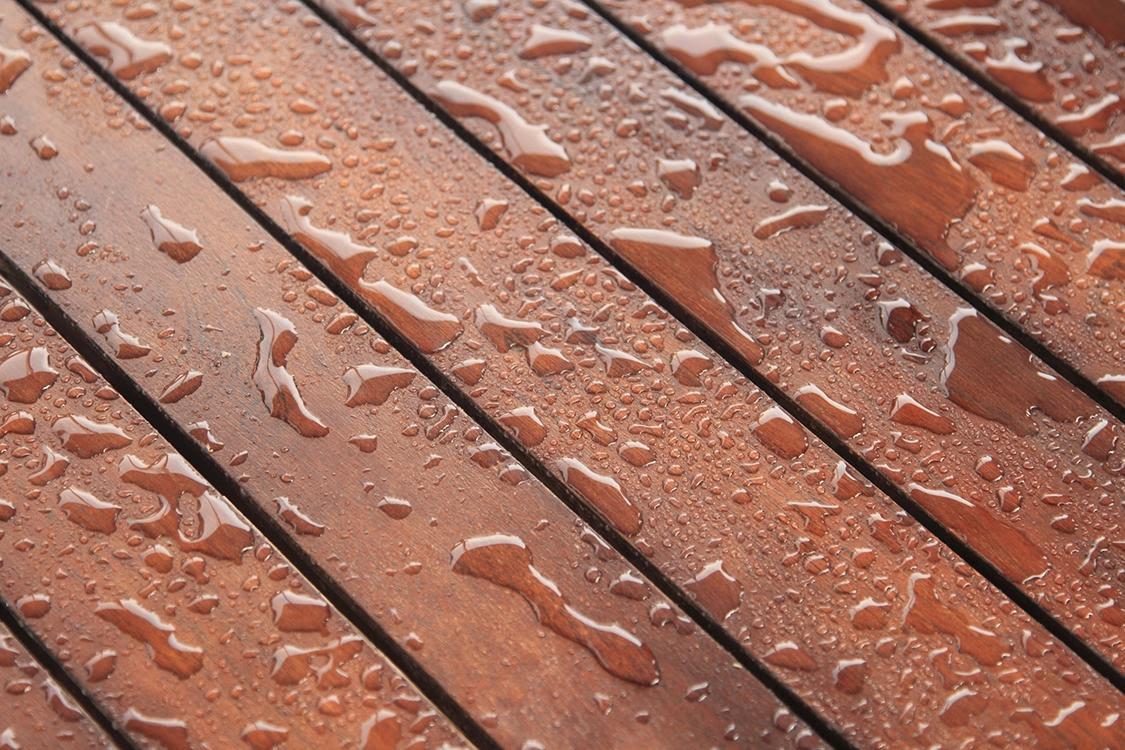
Staining a new deck is essential to preserve the life of the wood, especially if the deck is exposed to the elements. The sun, rain, and snow can quickly take a toll on the wooden surface, leading to discoloration, warping, and cracking if left untreated. By applying a stain, you can help protect the wood from UV rays, moisture, and temperature changes. Stain soaks deep into the wood, creating a protective barrier that can help prevent water damage, insect infestation, and rot. Additionally, stains come in a range of colors and finishes, allowing you to customize the look of your deck while also protecting it from the elements. Regular maintenance, including cleaning and reapplication of stain as necessary, will ensure that your deck lasts for years to come.
Ready to get started? With a quick online search, you can find various ways to construct the perfect deck for your outdoor space.


